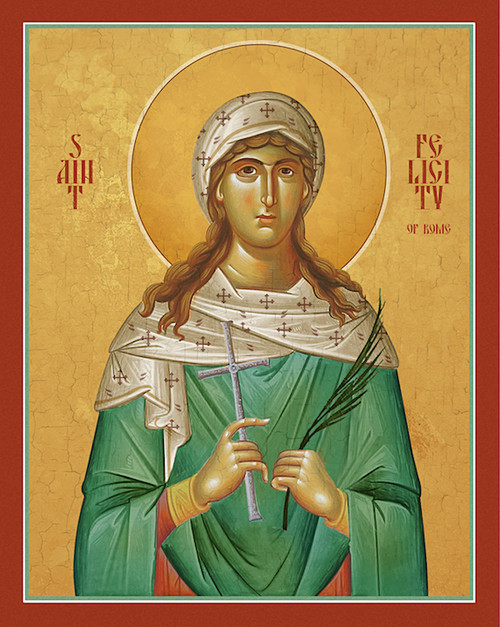St. Agnes of Rome (+c.304)
Commemorated on January 21
St. Agnes is a Virginmartyr who is depicted in sacred art holding a lamb. The name "Agnes" is from the Greek word Αγνή meaning "chaste, pure, sacred." According to tradition, she was born into Roman nobility, raised in a Christian family, and was martyred at about the age of twelve or thirteen during the reign of the Roman Emperor Diocietian on January 21, 304.
As a beautiful young woman from a wealthy family, she had many suitors. One young suitor, who was rebuffed by her resolute devotion, gave her name to the authorities as a follower of Christ. St. Agnes was condemned to be dragged naked through the streets to a brothel. One account says that as she prayed, her hair grew and covered her body. Another account says that all of the men who tried to rape her were immediately blinded. St. Agnes is eventually sentenced to death. She was bound to a stake, but the wood would not burn or the flames parted from her. The officer in charge then stabbed her in the throat. Again, tradition says the her blood poured onto the stadium floor where other Christians soaked it up with cloths.
Since approximately the Middle Ages, St. Agnes has traditionally been depicted as a young girl in robes, with a lamb (which is the symbol of her virginal innocence). Her bones are beneath the high altar in the church of Sant'Agnese fuori le mura in Rome, built over the catacomb that housed her tomb. Her skull is preserved in a separate chapel in the church of Sant'Agnese in Agone in Rome's Piazza Navona.







